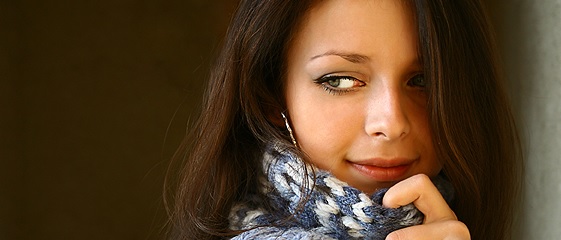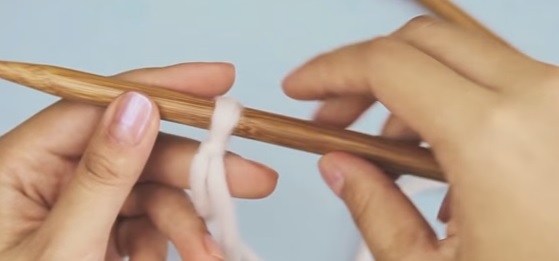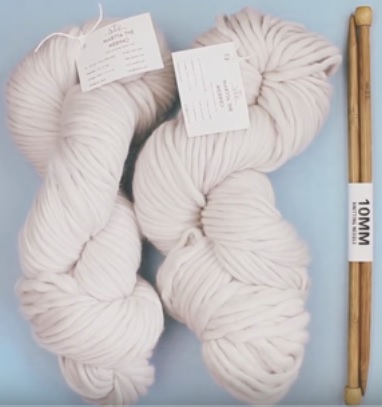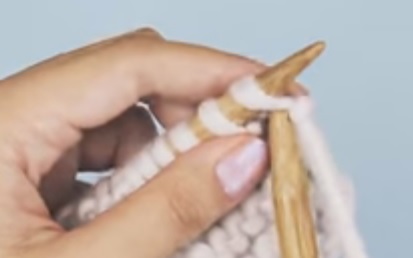Knitting your own scarf is the perfect starter project for beginner knitters. It’s a work that ‘grows’ at a satisfyingly fast rate, and can be used to create both a stylish look and a very useful accessory!
This post will take you through 10 easy steps on how to knit a scarf.

How to knit a scarf in 10 easy steps
Image by Sheep and Stitch all©2015
Step 1: Choosing your materials
It’s important to choose wool and needles that are suitable for knitting a scarf. For first-time knitters, it is definitely easier to use thick needles and yarn––this makes the knitting quicker and simpler.
It’s always a good idea to choose quality materials because that will affect the final finish, and often the ease with which you can use them.
- This post will show you how to switch between various balls of wool as you knit, so that you can incorporate different colors. But it isn’t necessary to do this to knit your scarf––you can keep the same color throughout if you prefer.
- To very simply create a variety of colors without changing wools, you can use multi-colored wool.
- You will need around 180m (200 yards) of wool in total.
- And regarding needle size: bigger needles create looser stitches, and smaller needles, tighter stitches. So, choose needles which are the appropriate size for the type of scarf you want to make. For medium-weight wool (also known as worsted weight yarn), size 8-10 needles are often used.
Step 2: Getting started
Image by Sheep and Stitch all©2015
Quick tip: you may find yourself knitting for prolonged periods, so make sure you’re in a comfortable chair and position, with good lighting, and space to move your arms freely.
- Cast on 10-40 stitches––the number of stitches will determine the width of the scarf––using your first shade of wool. If you’re using medium-weight wool and size 8-10 needles, you’ll need to cast on 30-40 stitches.
- Knit 12 rows using this color.
- Tip: always finish the row you are knitting before taking a break.
Step 3: Colors

If you’re using more than one color of wool for your scarf, cut the wool after finishing the 12th row, leaving about a 6-inch length of wool.
(If you’re not using a second color, simply carry on knitting to the end in your single color.
It’s a good idea to make sure your different balls of the same colored wool have matching color codes to ensure they are the same shade, when you’re making something in a single color.)
Step 4: Changing colors
When you begin using the second color of wool, allow a length of about 6-8 inches of wool to hang free, and then begin using the new color to knit your stitches.
Step 5: Knitting with the second color
Knit about 5 stitches, and stop to gently pull the ends.

Step 6: Leave the ends loose
When the knitting is completed, you will sew these ends into the scarf.
Step 7: Knit 12 rows in the new color
Follow the same process for this second color as you did with the first.
Step 8: Add a third color of wool if you want to
If you want to add a third color, simply repeat the steps above, in which you added your second color.
(You can repeat this step for as many color changes as you like.)
Step 9: Knit 12 rows again, as you did with the second color
Keep your color bands at a regular length of 12 rows each until your scarf grows to the desired length.
Step 10: Sew the ends into the scarf
Discreetly sew the ends into the corresponding color bands so that they can’t be seen.
And there you have it… your very own, homemade knitted scarf!
Image by Sheep and Stitch all©2015
Interesting facts about scarves
- Scarves have a long history, dating back to 1000 B.C.
- In Rome, they were used to help people keep clean, rather than as a fashion accessory. Known as a sudarium––a “sweat fabric”––these pieces of fabric were generally used by Roman men to wipe their face and neck when they were hot and sweaty.
- Scarves were also used to denote military rank in the Chinese military as early as 3rd century BC.
- Well-known fashion houses were designing scarves as stylish accessories in the 1800s. These were generally produced using silk, with perhaps the most outstanding examples being made by Hermès.
- As they became increasingly fashionable, they were made using less expensive fabrics––including rayon––to make them more affordable and accessible to a wider audience.
- Scarves grew in popularity with both men and women through the 20th century. Around the second world war, the colors of scarfs tended to be muted in shade to reflect the sombre state of affairs. While the scarves of the ’60s were brilliantly colored and highly patterned!
- This Scarf History Timeline provides an extensive look at how the scarf has evolved over the years.
Scarves make beautiful and diverse accessories, as well as being snug, keeping our necks warm in cold weather!
How would you describe your favorite scarf?
If I had to use three words, I’d pick…
- Versatile
- Downplayed: a scarf is a clever, and often subtle way to pull together, and ‘finish’ an outfit.
- Personalize: using a scarf you can easily individualize your style. Check out thrift stores, eBay, and of course, make your own, for the perfect scarf for your unique look.
I hope this post has completely inspired you to get started, and get scarf knitting.
If you have any extra tips please go ahead and share them with us.
Let us know how you get on, and as always, upload any photos in the comments below, we love to see them.



Leave a Reply